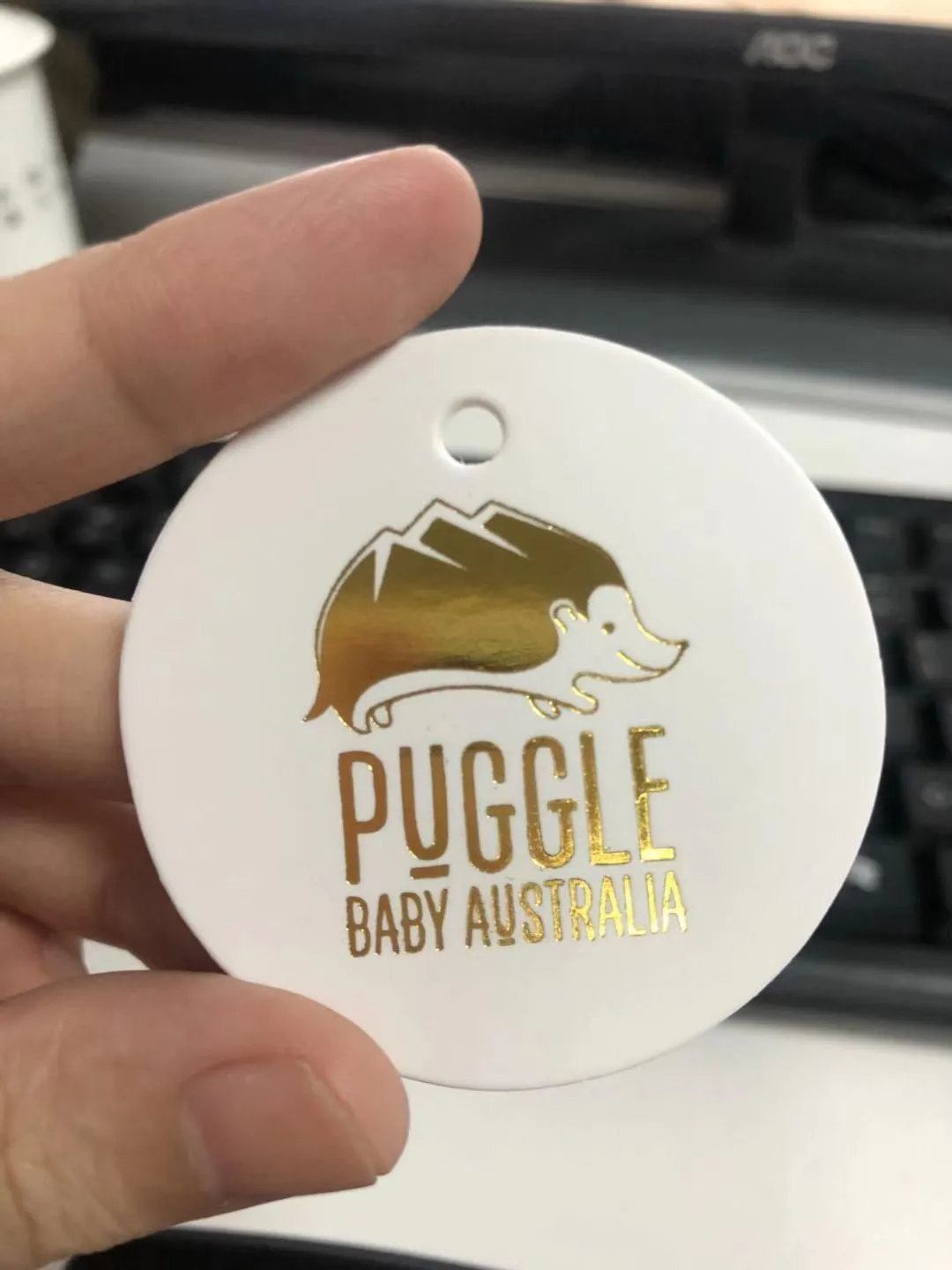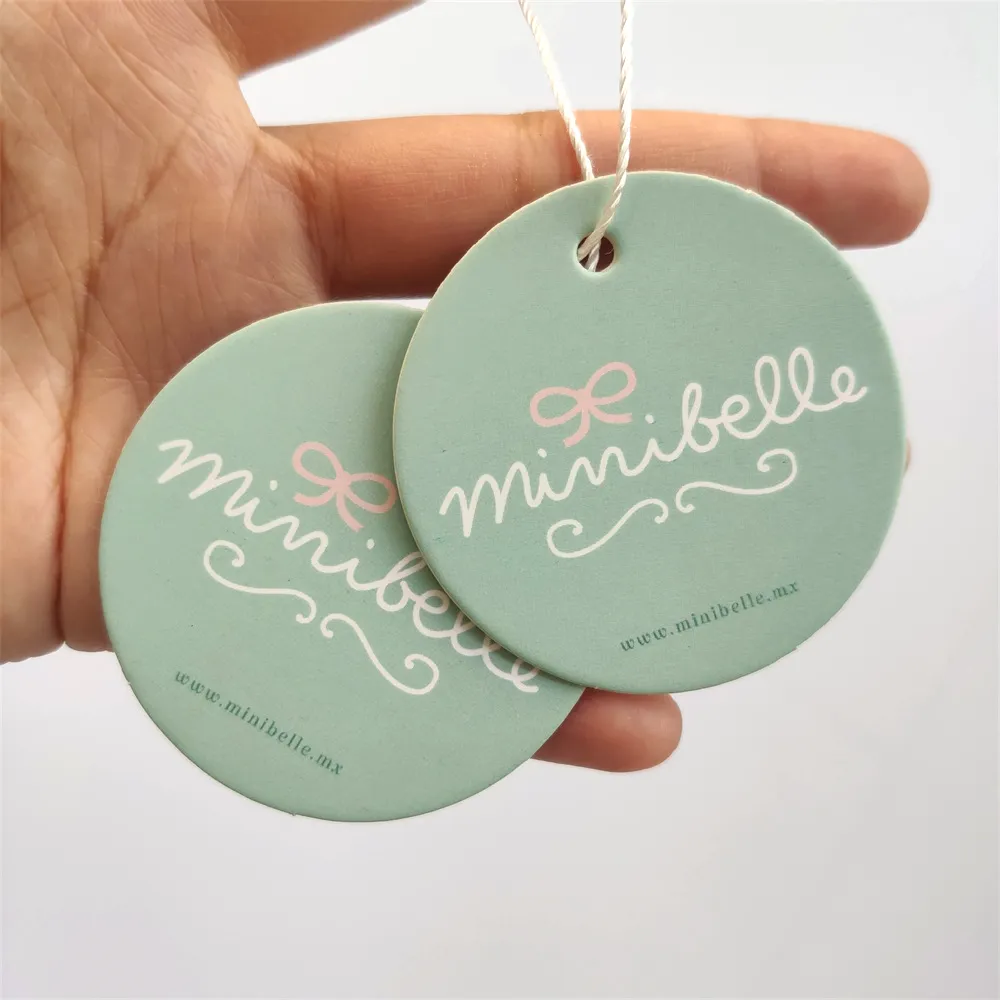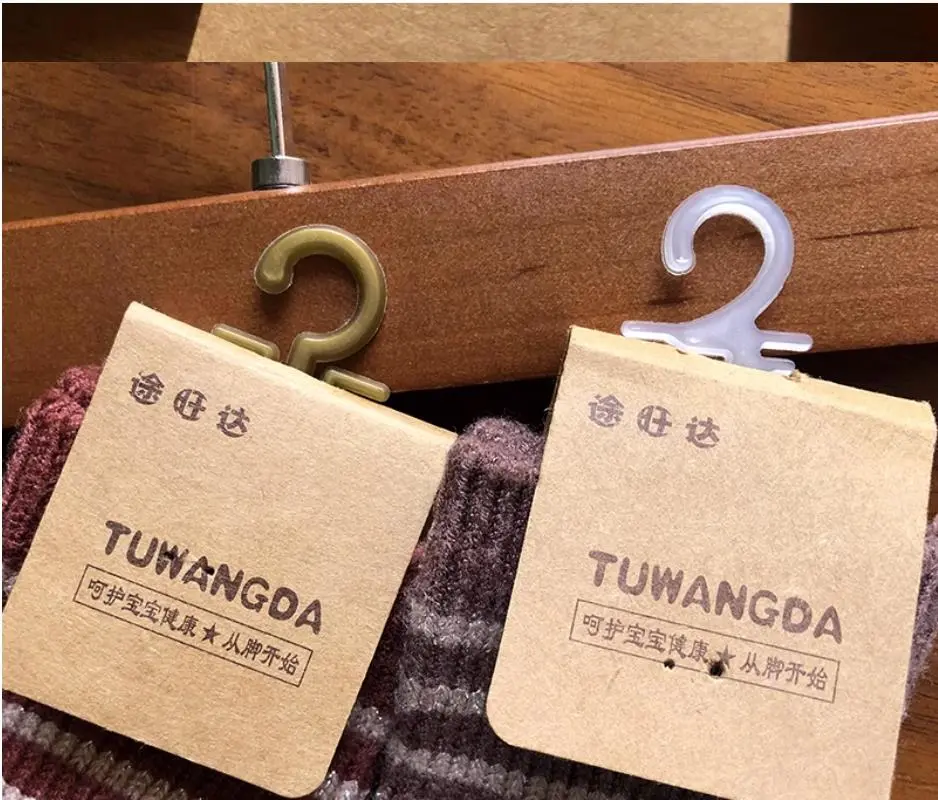Round Clothing Hangtags Wholesale
Round Clothing Hangtags Custom
China LIJIE's round hangtags provide a unique and stylish alternative to traditional tag shapes. These round tags are perfect for adding an elegant touch to any product. Made from high-quality materials, they ensure durability and a premium feel. The circular design offers a unique canvas for your brand logo, product information, or promotional details. China LIJIE’s round hangtags come in a variety of sizes and finishes to enhance product presentation and attract attention with their modern, eye-catching appearance.

Unique Shape for Brand Differentiation:
The round shape of China LIJIE's hangtags offers a fresh and memorable alternative to traditional rectangular tags. This unique form helps your product stand out in a crowded market, capturing consumers' attention with its unconventional design. By choosing round hangtags, you emphasize creativity and innovation, leaving a lasting impression that enhances your brand's uniqueness.
Enhanced Branding Opportunities:
Round hangtags offer versatile design possibilities, accommodating everything from minimalist logos to intricate graphics. Their symmetrical shape allows for balanced and aesthetically pleasing layouts, making it easy to incorporate key brand elements and product details. You can choose from various finishes, such as matte, glossy, or textured, ensuring your hangtag aligns perfectly with your brand’s visual identity and marketing goals.

Increased Durability and Professional Quality:
Made from high-quality materials, China LIJIE’s round hangtags are designed for durability and long-lasting performance. Whether you opt for sturdy cardstock or eco-friendly options, these hangtags are built to withstand handling and maintain their appearance. High-quality printing ensures your information remains clear and professional, contributing to a polished presentation that enhances the overall perception of your product.



































